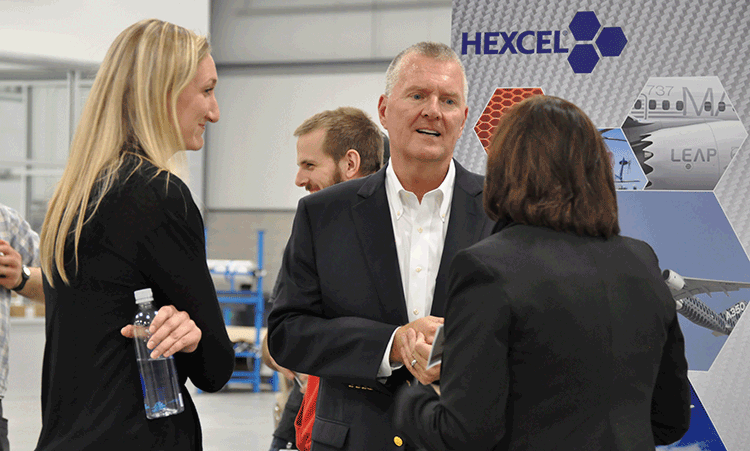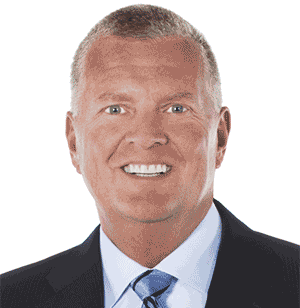The 2022 CEOs Who 'Get It'

Nick Stanage
Chair, CEO and President
Hexcel Corp.
Stamford, CT

Hexcel is a global leader in advanced composites technology with solutions that make a wide range of applications stronger, lighter and tougher. We develop and manufacture lightweight, high-performance structural materials such as carbon fibers, specialty reinforcements, prepregs and other fiber-reinforced matrix materials, honeycomb, adhesives, engineered core and composite structures for use in commercial aerospace, space and defense, and industrial applications. Hexcel employs 4,800 workers.
Describe your personal journey to becoming a CEO who “gets it.”

Safety at Hexcel starts with me. When I became CEO in 2013, I knew how important it was for me to personally lead the company’s safety efforts. I have always believed that our workforce is the most important asset in an organization, and nothing could be more important than their safety and well-being. And after years of leading other organizations, I knew an injury-free workplace was achievable. I hold each of our leaders accountable for creating safe work environments and strong, safety-minded behaviors. I am immediately informed of every incident, with regular progress updates on our continuous improvement efforts. Moreover, I hold every employee responsible for following safe work procedures, encouraging safe behaviors from their colleagues and continuing a commitment to safety, even when they leave the workplace for home. In every meeting or written communication with employees, I lead with a safety message and a reminder that safety is our most important job.
What is the biggest obstacle to safety at your organization, and how do you work to overcome it?
We have a smart, ambitious workforce in which everyone works efficiently as a team to meet customer needs. With that motivation and drive, however, comes the risk of not always taking the time necessary to stop and recognize or anticipate a risk – particularly when they encounter a nonroutine task or condition. Overall, we’re good at identifying risks, yet the few injuries we’ve experienced this year can be traced back to our team being so focused on a task that they don’t take an extra moment or two to adequately assess or anticipate all the risks. We see this with our newer employees, in particular. They tend to be really eager to demonstrate their work ethic and value, but don’t fully understand that we expect a “pause, assess and then act” approach. Most recently, our focus has been on how we reinforce the right behaviors so everyone knows they can pause and take an extra few minutes to understand and prepare to complete the job safely – and that will ensure improved safety awareness as well as a higher level of quality.
In addition to ongoing risk recognition training and more meticulous new-hire onboarding, we’ll be rolling out a new safety campaign focused on reinforcing this “pause, assess, act” mindset to help all our workers correctly recognize, anticipate and assess risk before performing any task.
Why is safety a core value at your organization?
The health and well-being of our team is paramount. And organizationally, we consider safe work a fundamental expectation of all leaders, employees and contractors. In fact, we have a commitment not only to work safely, but also to help ensure we keep one another safe. The idea is that safety isn’t a single activity – it’s who we are. It’s a key element in our One Hexcel culture.
How do you instill a sense of safety in employees on an ongoing basis?
We are relentless when it comes to talking about our commitment to a safe workplace. We have tremendous leadership throughout the organization that truly understands the importance of safety and the well-being of our workforce, and we constantly remind one another that we cannot be satisfied until every employee goes home safely every day. In recent years, our safety effort has been branded as “Soar to Zero” – a way to inspire our teams and to reflect our role in the aerospace, space and defense, and industrial markets. It’s a subtle, but easy, way to reinforce our goal and ongoing pursuit of an injury-free workplace.
Practically speaking, we start each of our meetings with a safety moment – including shift meetings and leadership team meetings – which reinforces our commitment by demonstrating safety is the most important element in our daily activities. We have communication campaigns that include weekly topical messages that are also pushed to screen monitors located at each facility with messages about best practices, lessons learned, continual improvement and performance. Safety is also a regular feature in our quarterly employee newsletter – with specific emphasis on recognizing sites and teams with innovative solutions to safety challenges or those achieving significant safety-related milestones. Annually, we recognize sites for outstanding work achieving EHS excellence, which includes leading metrics and indicators focused on engagements, leadership and proactive safe actions. Finally, we extend our safety expectations to suppliers and contractors by sharing our expectations and holding them accountable to the same standards as our own employees. In short, we incorporate safety into everything we do.
How does your organization measure safety?
We publish a monthly report to the entire corporation, which displays our progress toward safety excellence through a variety of metrics. In addition to the traditional lagging injury and incident metrics, we have a consolidated employee engagement metric that reflects each site’s engagement with various safety systems, which are focused on actively identifying and correcting at-risk behaviors and conditions before an incident occurs. Some of these systems include behavioral-based safety observation, positive safety interactions, hazard hunts and near-miss reporting, to name a few. Our belief is that if our messaging is strong and consistent, and we all think of risk and safety in the same proactive way, we will ultimately reach our goal of zero injuries.
We also conduct periodic EHS perception surveys at each site to solicit feedback from the workforce on how we are doing to enable and sustain a world-class EHS culture. Through this process, we identify improvement opportunities that further develop and advance our culture, and we track each site’s continuous improvement toward our internal criteria of EHS excellence.
What role does off-the-job safety play in your organization’s overall safety program?
When we have our safety moments before meetings, many of them relate directly to the personal side of safety, such as home ladder safety, seasonal risks, safe driving, or taking care when doing yardwork or cooking for your family. One of our ongoing communication campaigns is called “Safety. Live by It.” It’s an award-winning campaign that features images of people of all ages enjoying activities with family and friends. It reminds us why we work safely. We believe safety is a way of life that should be top of mind, regardless of whether our employees are at work or at home. Our individual and collective safety is a commitment we make to one another, and we live by it.
We also celebrate National Safety Month in June at all of our global locations, with many of our sites engaging worker families and community partners so the risks and behavioral aspects are extended beyond our manufacturing and workplace risks. Most sites integrate general health, mental wellness and home safety into these sessions, with practical solutions and tools that we encourage be shared with family and friends. We really are mindful about safety extending beyond the “walls of work.” It’s something that should be applied to everything we do – whether at work, at home, in the car, or with family and friends.
What have you done to support employee mental health and well-being within your organization?
We partner with a third-party health advocacy group to provide free counseling and wellness support to employees and their family members. Our program is called WellHexcel, and it provides a mix of virtual and in-person services to help employees and their eligible spouses better balance work and personal lives. Services include targeted mailers for health screenings, onsite biometric screenings and flu shots, an advocate to help navigate health care costs and physician selection, and financial rewards for completing wellness activities. Our employee assistance program offers confidential, short-term counseling from licensed professional counselors for a full range of personal issues, with help available 24/7 through telephonic or video conferencing. We choose to invest in the well-being of our employees because they are our most valuable resources in achieving our organizational goals.
Post a comment to this article
Safety+Health welcomes comments that promote respectful dialogue. Please stay on topic. Comments that contain personal attacks, profanity or abusive language – or those aggressively promoting products or services – will be removed. We reserve the right to determine which comments violate our comment policy. (Anonymous comments are welcome; merely skip the “name” field in the comment box. An email address is required but will not be included with your comment.)


